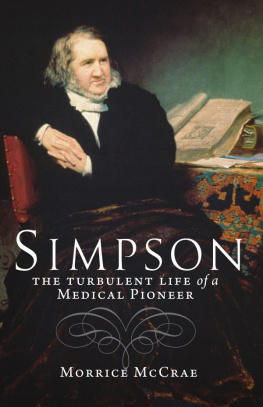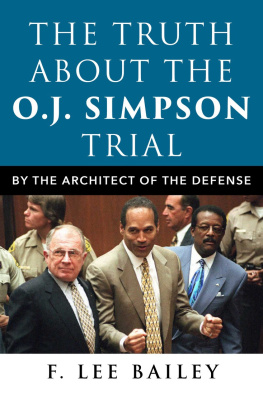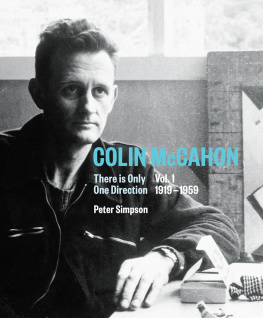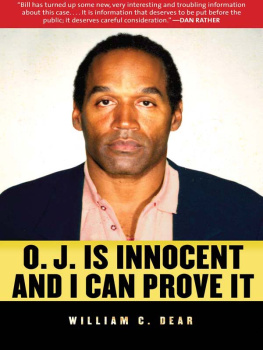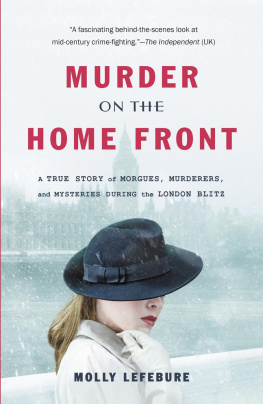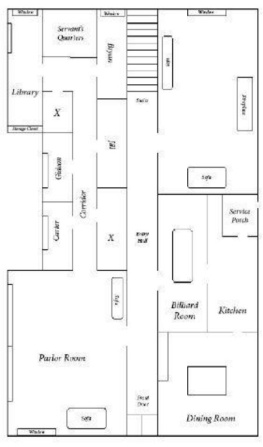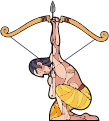| Forty Years of Murder |
| Keith Simpson |
| Vibhatsu (Jul 2008) |
|
| Tags: | Murder, Forensics, Autobiography, Pathology |
| Murderttt Forensicsttt Autobiographyttt Pathologyttt |
Christie, Hanratty, The Krays murderers haunt the mind.
We read about them in the press with horrified curiosity and, if were lucky, this is as close as we get. But Home Office Pathologise Keith Simpson spent forty years in the very midst of murder.
This is his autobiography.
The late Professor Keith Simpson became the first Professor of Forensic Medicine at London University and lectured on the subject to other doctors, lawyers, police officers and magistrates at home and all over the world. He pioneered forensic dentistry, and for the first time identified a suspected murderer by teeth marks left on the victims body. He was responsible for the first successful battered baby prosecution in England, and perhaps one of his greatest contributions has been to save the lives of countless babies by disseminating information on the syndrome and getting it recognized and controlled.
This is the bestselling autobiography of the man who was always at the scene of the crime. In describing his celebrated investigations he spares his readers none of the chilling details: the whip-marks, the maggots, the skeletal remains, which proved the innocence of so many men and womenand sent so many more to the gallows.
Title Page
PROFESSOR KEITH SIMPSON cbe
Forty Years
of
Murder
An Autobiography
This book is
compiled & gifted to book-lovers by
Vibhatsu
About the Author
Professor Keith Simpson entered Guys Hospital as a student and stayed as a teacher for the whole of his professional life. He became the first Professor of Forensic Medicine at London University and has lectured to other doctors, lawyers, police officers and magistrates at home and all over the world. He is the author of a standard textbook on the subject and editor of the professions bible Taylors Medical Jurisprudence. He pioneered forensic dentistry, and for the first time identified a suspected murderer by teeth marks left on the victims body. He was responsible for the first successful battered baby prosecution in England, and perhaps one of his greatest contributions has been to save the lives of countless babies by disseminating information on the syndrome and getting it recognized and controlled. Although now officially retired, Keith Simpsons services are still much in demand and, totally dedicated, he has never lost his zest for work.
By the same author
Forensic Medicine
A Doctor s Guide to Court
Modern Trends in Forensic Science
The Investigation of Violence
Taylors Principles and Practice of Medical Jurisprudence (Edited)
The Fatal Chance -A series of crime stories under the pen name of Guy Bailey
Copyright
Published by Granada Publishing Limited in 1980 Reprinted 1980 (twice), 1981 (twice), 1982 (twice)
ISBN 0 586 05038 8
First published in Great Britain by George G. Harrap & Co Ltd 1978 Copyright Keith Simpson 1978
ePUB release 2022 by Vibhatsu
Cover Design by Rah
Granada Publishing Limited
Frogmore, St Albans, Herts AL2 2NF and
36 Golden Square, London W1R 4AH
515 Madison Avenue, New York, NY 10022, USA
117 York Street, Sydney, NSW 2000, Australia
100 Skyway Avenue, Rexdale, Ontario, M9W 3A6, Canada 61 Beach Road, Auckland, New Zealand
Printed and bound in Great Britain by Cox & Wyman Ltd. Reading Set in Intertype Times
This book is sold subject to the condition that it shall not, by way of trade or otherwise, be lent, re-sold, hired out or otherwise circulated without the publishers prior consent in any form of binding or cover other than that in which it is published and without a similar condition including this condition being imposed on the subsequent purchaser.
Granada
Granada Publishing
London Toronto Sydney New York
Contents
Illustrations
The author (right) at the age of seven, with his mother, brother and sister
1934: On holiday with Ian, his only son, who is now a Suffolk country doctor
The author leaving Caxton Hall, in March 1956, after having married his secretary, Miss Jean Scott-Dunn
Superimposition photography (X-ray over enlarged portrait) in the Dobkin case
Body of Joan Pearl Wolfe; and knife with beak end, recovered from drain in the wigwam murder
Loughans making his confession to The People in the John Barleycorn murder Photo Sunday People
Loughans deformed hand which foxed Spilsbury
The author dictating to his first secretary, Miss Molly Lefebure
The authors assistant at Guys, S. F. Ireland, giving instructions to an assistant
Police poster shown at cinemas in the Luton sack murder Fingerprint on pickle jar discovered on search of premises by Detective Chief Superintendent Fred Cherill of the Yard
Body in the chalkpit case - as found on the hillside
Detail of skin mark inflicted by switch on Margery Gardner, by Heath
Body of Gregston lying in the lay-by on the A6, Bedfordshire
R. V. Boyce. Comparison of the shell-case found at the Greek Kings flat with that produced by Boyces lodge friend
The author with his secretary, Miss Jean Scott-Dunn, searching the scene at Crawley in the Haigh case
The author with J. Edgar Hoover, Head of the FBI, on a visit in 1952, and Hoovers inscription to author
The author with Bovari and the late Milton Helpern, state medico-legal pathologists for Budapest and New York, at a European conference
The clothing as Joan Woodhouse left it in Arundel woods
The,imprint of a blood-stained axe in a prostitute murder in Paddington
and the victim, as found, on the bed
The victim in the Maidenhead trunk murder concealed in a travelling trunk. Note keys near by
The author in 1976 Photo Godfrey Argent
Examining the remains of Baby Armstrong in the Seconal case at Portsmouth, with Chief Superintendent Salter, Yard Liaison Officer
The heating apparatus in the motel bathroom in the Trist case in Portugal
Butane generator and inadequate ventilator
Body as found in the Lydney murder; and a page from the authors notes at the scene
The post office withdrawal slip in the Southampton taxi murder and enlargements of the fingerprints
The author working at the exhumation of a murder victim in Antigua, West Indies
Still on the job - 8 a.m. Battersea Park
CHAPTER ONE :
Why choose Pathology?
Y ou might well ask what could possibly persuade any young doctor, unmarried and without ties, to take up the study of the dead - the diseased, mutilated, sometimes even dismembered dead, whose bodies seem to come to light at such odd hours and in such queer places. Why not a nice clean laboratory job in a white coat with keen technical staff, or a challenging research project? Or surgery, with the glamour of the operating theatre, the appeal of brilliant results snatched from the jaws of disaster? Why not patient scholarly physicianship - or neurology, obstetrics, childrens diseases? There they all were, and if youd had a successful medical studentship, as mine had been at Guys, the choice really was wide open. So why the dead body, the often smelly morgue, exhumation, lust and violence, the inconvenience of calls to derelict premises, dells in Epping Forest, ponds, prostitutes bedrooms, at all hours; of sudden challenge, hard duels with lawyers, pompous old judges and obtuse juries? Why?



